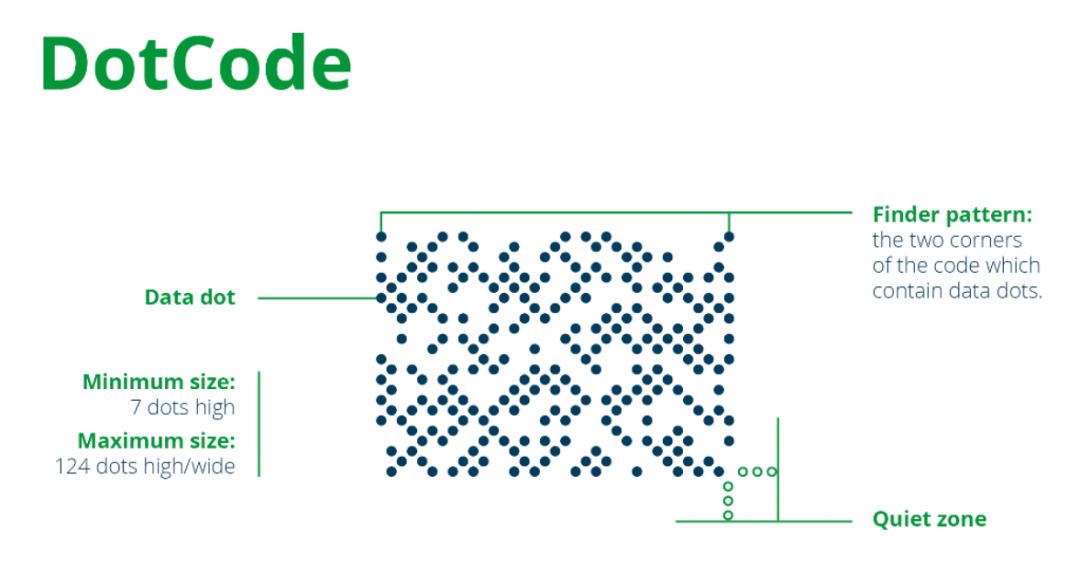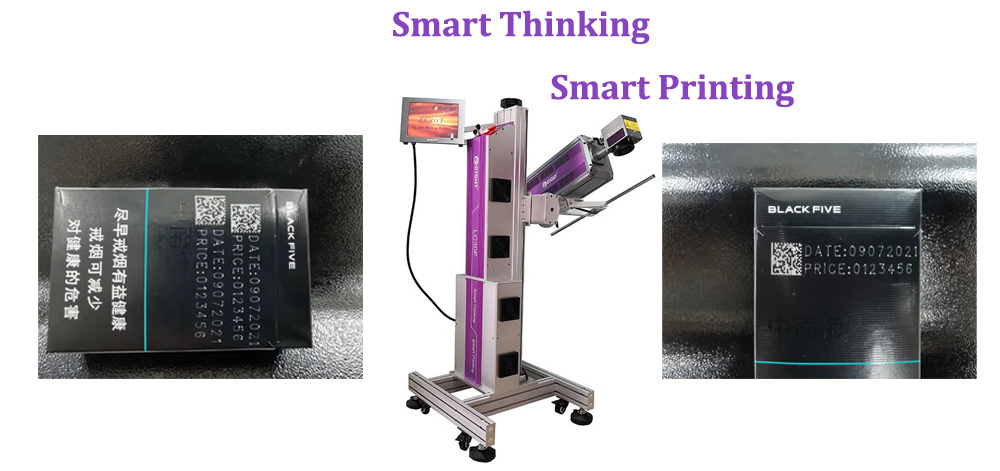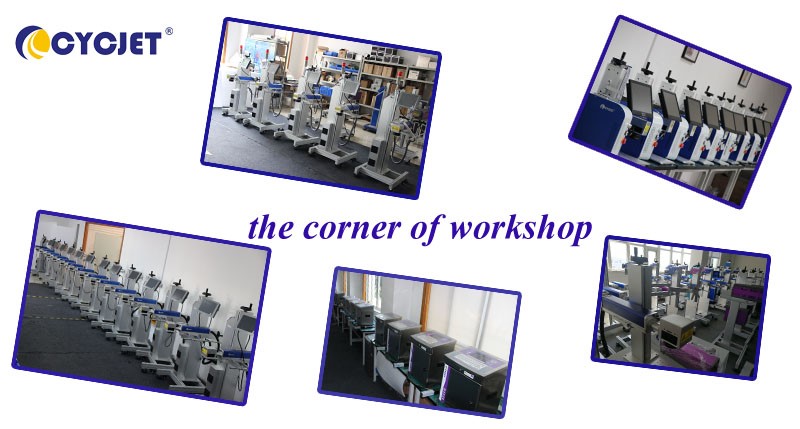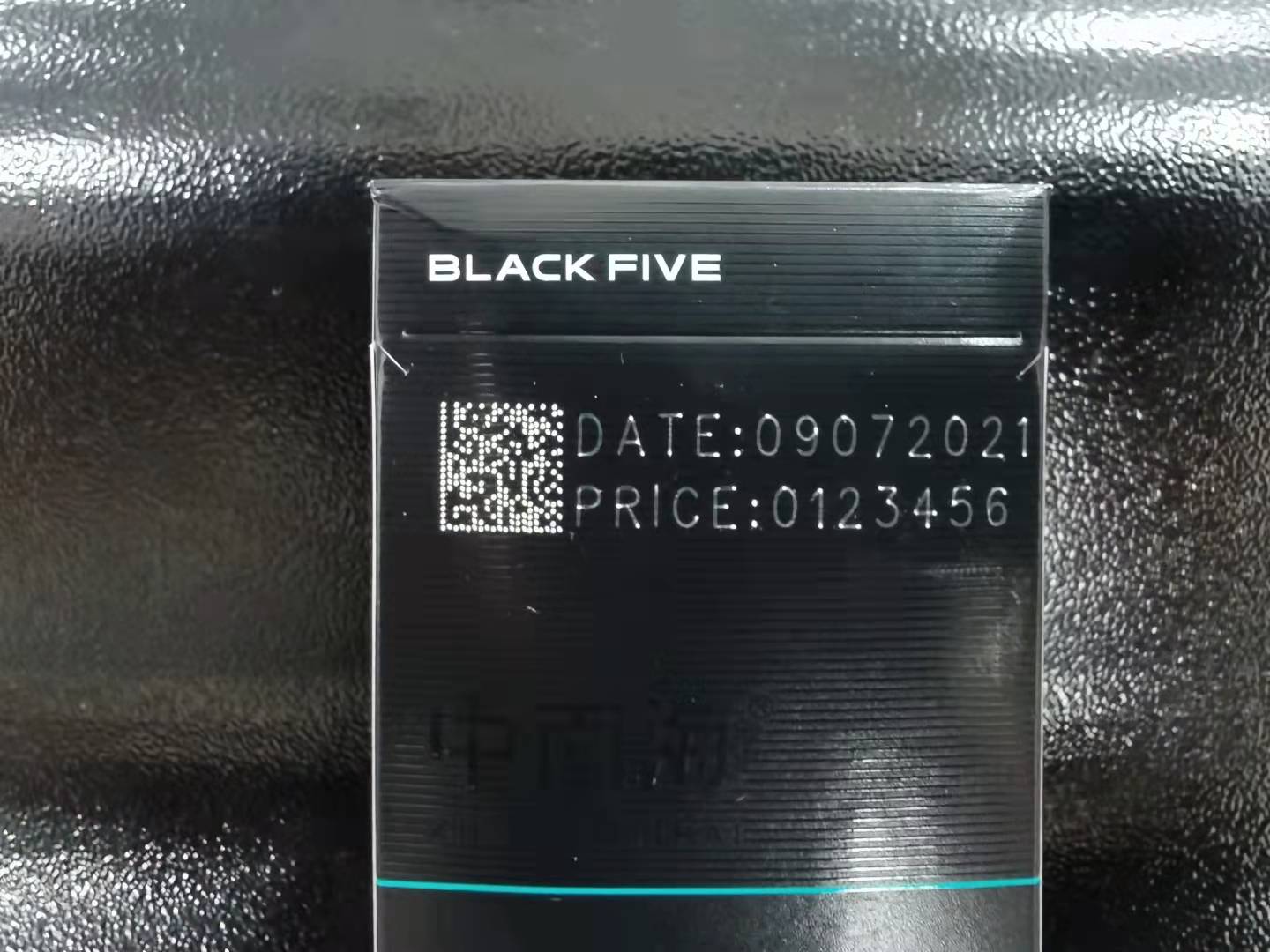Old friends who follow us should already know about DM codes, QR codes and their uses in different industries. In addition, there are many other kinds of QR codes, each with their own unique application areas and limitations
Today, we're going to explore a lesser-known 2D barcode symbology, DotCode, a relatively new addition to the QR code space that was developed for very specific high-throughput applications.
Dotcode
DotCode is a two-dimensional barcode that encodes data in dots in a rectangular array.
In high-speed production industries, DotCode can be used as an alternative to other QR codes to facilitate item-level serialization, enabling product tracking across global supply chains.
DotCode was developed by Dr. Andrew Longacre, and the official specification was released by the global industry standards organization AIM in 2009.
DotCodes are public domain codes, which means they are not copyrighted and have no royalties, so organizations of all kinds do not need authorization to print or use them.
Like other QR codes, DotCode has error correction capabilities using the Reed-Solomon correction algorithm, which can be used to detect and recover missing data in QR codes. This means that if part of the code is missing or damaged, the DotCode can still be read.
What does Dotcode look like?

Unlike many other QR codes, DotCode is usually rectangular. Data in DotCode is encoded as "data points". Data points can be squares or circles and lie on the diagonals of a grid of rectangles.
The size and orientation of DotCode is very flexible, but the sum of the height and width points of the code must be an odd number.
DotCode can print in dark on light backgrounds or light on dark backgrounds, as long as there is enough contrast to ensure readability.
The minimum size of DotCode is 7 dots high, there is no theoretical maximum size, but the practical limit achievable with most printing technologies is 124 dots in any direction.
Like other QR codes, DotCode also has a "finder graphic" where being able to see the location of the dots in the two corners of the code containing data points to let the data reader or scanner know where to start reading the data.
When the DotCode is printed, it must be surrounded by a three-dot-wide "static area" on all sides. This blank space ensures that the scanner can effectively scan and read the code without deciphering any additional print content.

What data can DotCode contain?
DotCode can encode data using all 7-bit ASCII (American Standard Code for Information Interchange) characters, as well as all extended 8-bit ASCII characters - representing the numbers 0 to 9, lowercase letters a to z, uppercase letters A to Z, punctuation marks, and a series of special characters.
Unlike other QR codes, DotCode is not technically limited to any functional capacity related to data capacity, and there is no basic maximum capacity for the amount of data stored in DotCode.

The ideal coding choice for DotCode?
Unlike other QR codes, DotCode does not require continuous production lines or precise spatial spacing, so it can be used reliably on high-speed inkjet printers, including inkjet and laser marking systems. This makes such codes ideal for industries with high-speed production lines.
How to scan DotCode?
Like DM codes and QR codes, DotCode can be scanned from any direction using a professional 2D barcode scanner or camera scanner. The DotCode can also be scanned using the camera on your smartphone or tablet if a suitable barcode reading app is installed. However, using DotCode in consumer-facing applications is generally not recommended.
What industry is DotCode suitable for?
The use of DotCode has seen great success in the serialization of packages in the European tobacco industry, where the fast-paced production environment in Europe (often producing up to 1000 packs per minute) requires a high-speed product marking solution.

The global standards body GS1 is responsible for maintaining global standards for the use of DotCode in the tobacco industry to meet the requirements of the European Union's Tobacco Traceability Regulation EU 2018/574.
While the most prominent use of DotCode is in the tobacco industry, the code's suitability in fast-paced production environments may be useful in other industries with high-speed coding requirements, such as the alcoholic beverage industry, where serialization may become a future a need for these industries.
CYCJET is the brand name of Yuchang Industrial Company Limited. As a manufacturer, CYCJET have more than 16 years of experience for R& D different types of handheld inkjet printing solution, Laser printing solution, and portable marking solution, High Resolution Printing solution in Shanghai China.
Contact Person: David Guo
Telephone: +86-21-59970419 ext 8008
MOB:+86-139 1763 1707
Email: sales@cycjet.com
Keywords :
Working video: